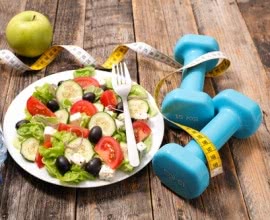Old School Body Composition, part 3
In parts one and two, of this article, we looked at the background and essential principles of physical fitness amongst pre-industrial peoples and why obesity was such a rarity within those populations. In this present and final part, we shall consider how we might apply that information, practically, so as to share in some of the same benefits our forebears enjoyed.
As ours will be the work of the quarry man and not the gardener, we will work for strength, which will build a foundation and benefit everything else. Gains in muscle mass and size will be quite a secondary concern, and, though you may see some benefits in that department by employing the approach presented below, if hypertrophy is what you seek, you are directed to look elsewhere.
Principles are few and methods are many. In order to simplify matters, only one method will be offered here, as follows.

Select a single exercise for each basic movement category of hinge, squat, pull, and push. Specific exercise modalities are down to personal choice, whether they involve free-weights (including odd objects, such as stones and sandbags), bodyweight, or resistance bands. If pressed, the author might recommend the deadlift, squat, pull/chin up, and dip (to answer each of the aforementioned categories, respectively), as these can easily be loaded progressively and call a great deal of muscle into play. However, by no means are these the only exercises available to you. Steer clear of the machines commonly found in gyms, as these tend to remove the balance and coordination aspects of exercise, whilst isolating muscles and, therefore, preventing the body from working as a single unit.
After selecting the four exercises, test yourself in each, to determine an intensity level that will allow you to perform eight consecutive repetitions in that exercise. This is termed your eight repetition maximum and will be your starting point. After testing, allow yourself a day or two of rest, before beginning the programme.
At every training session, devote to each exercise an equal portion of time, aiming to accomplish as much work as possible with that exercise in the time allotted. Thus, if you can spare one hour in total for training at each session, devote 15 minutes to each of the four exercises, performing as many repetitions as possible within that window.

In order to accomplish work inside each time frame, in the most efficient manner possible, perform single repetitions, at regularly spaced intervals. Use a clock to ensure this regularity, and, by increasing or decreasing the interval, you will be able to control the level of fatigue you experience. The greater the work period you allot an exercise, the longer the intervals must be to guarantee work output can be sustained throughout the period.
At no point should you fail to perform a repetition, due to fatigue. If this happens, increase the interval, immediately, or end your training for the moment, and increase it at the following session. This will simply allow you more rest between reps and, thus, ensure adequate recovery. The amount by which you adjust the intervals comes down to personal judgement, which will improve with experience.
To review, by way of example, if you have 15 minutes, in which to accomplish as much work as possible, with the press-up (a “push”), depending upon recovery ability and current strength, you may attempt to perform a single press-up every minute, on the minute. If this proves too easy, shorten the interval, or if too difficult, extend it, until you find the most agreeable configuration.
References:
https://www.t-nation.com/workouts/singles-club
http://www.bodybuilding.com/fun/wiggy2.htm
https://www.onnit.com/academy/high-frequency-training-calisthenics-for-survival/
https://sustainableevolution.files.wordpress.com/2013/10/bryce-lane-compendium.pdf
Justa, Steve (1998) Rock, Iron, Steel. Salt Lake City: Iron Mind Enterprises, Inc.: Nevada City, CA.
Wiggins, Matt (2002) Doubles and Singles: How the Ordinary Become Extraordinary. http://www.workingclassfitness.com/














